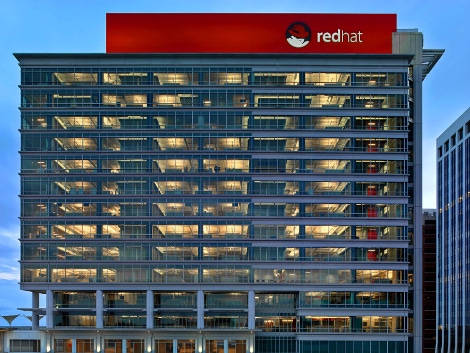Red Hat Forms OpenShift Commons to Drive Open Source PaaS Innovation
Commons to act as a bridge between numerous open source PaaS communities
March 2, 2015

Red Hat has unveiled OpenShift Commons, a new community initiative around its open source Platform-as-a-Service OpenShift and the technologies it is based upon.
Red Hat’s OpenShift combines best-of-breed open source technologies, including OpenShift Origin, Docker, Google Kubernetes, Project Atomic. Commons is a community of communities. The project can be seen as a bridge between them, designed to facilitate sharing of knowledge. The Commons will work towards best practices and enable collaboration on dependencies to advance open source PaaS.
OpenShift is already a very open project, with an upstream community called Origin, where all the code is free.
“As we went on this journey, customers would say they want knowledge of best practices,” Ashesh Badani, a general manager at Red Hat, said. “We run big operations, and we had partners working with us, but they also want to hear from other peers. Instead of having these one-to-one conversations, why not have a transparent community?"
OpenShift Commons launches with participants across the technology landscape, from big vendors like Cisco and Dell to service providers like Orange, integrators like CSC, as well as startups and end users.
Over 2.2 million applications have been created on the four-year-old platform.
Red Hat hopes the community will direct Commons completely going forward. “We’re looking to get it seeded, but over time I expect more organic ideas,” said Badani.
The Battle for Top Open Source PaaS
There is another popular open source PaaS out there: the Pivotal-led Cloud Foundry project. Similar to Red Hat and Commons, Cloud Foundry launched its own independent governing body in a bid to establish a formal governance model for the project to not have it driven by a single vendor.
There is also a PaaS project within OpenStack, called Solum, which popped up roughly a year ago. OpenStack is important to open source cloud, so Solum is seen as something that will play a big role in the future of open source PaaS.
Red Hat, a massive contributor to OpenStack overall, was asked to contribute to Solum, and the company was interested. It even appeared at one point that OpenShift could merge into the PaaS component of OpenStack. Architect and founding OpenShift member Matt Hicks posted a blog that illustrates the excitement for the project.
Rackspace (one of the major driving forces behind OpenStack from its birth) and Red Hat appeared to collaborate for a few months, but then it somewhat fizzled.
There was some industry speculation about what happened. Cloud Foundry started the CF Foundation (the independent governing body), and speculation ramped further when Rackspace decided to throw its weight behind it.
Around this time, OpenStack Foundation director Josh McKenty made a controversial prediction in a Forbes interview: OpenStack would abandon its own PaaS efforts and Red Hat will eventually join the CF Foundation. Would Red Hat abandon its PaaS ambitions? Creation of the Commons suggests it would not.
Mirantis co-founder Alex Freedland posted his thoughts on the interview last year. "It will be extremely hard for Red Hat to abandon its current messaging around OpenShift and its elegant attempt to morph it into OpenStack via project Solum," wrote Freedland. "For many years now, Red Hat has been promoting OpenShift to its customers and admitting that it was a mistake and betting on a different horse would be a strong blow to the company’s credibility as its customers’ most reliable adviser in the ever-changing world of open source software."
Badani suggested the drama was a little exaggerated.
“There were a few folks in OpenStack and a folks out of Rackspace that were interested in creating a PaaS project,” said Badani. “We were approached and asked if we were interested. We’re happy to support any technology that drives OpenStack. That product has gone through transformations. We’re watching it, and if we see a lot of demand, we’re happy to help it grow. I have no opinion and don’t believe there was anything going on in regards to any ‘project creep.’ We do see a lot of folks that want OpenShift on OpenStack.”
Red Hat outlined its overall cloud strategy to DCK last month. In terms of the technology, its primary interest seems to be advancing the next-generation technology platform through community.
“As a company, Red Hat’s had a lot of success in enterprise Linux and the Linux marketplace in general, for both OS and metalware,” said Badani. “In the last 3 years there’s been a huge transformation. Today Red Hat is focused on commoditizing existing markets and emphasizing the need for forward-looking innovation in areas not fully defined yet. PaaS is in that area. There’s also a big investment in container technology, and project Automic. There are big investments on OpenStack and Infrastructure-as-a-Service.”
About the Author
You May Also Like







